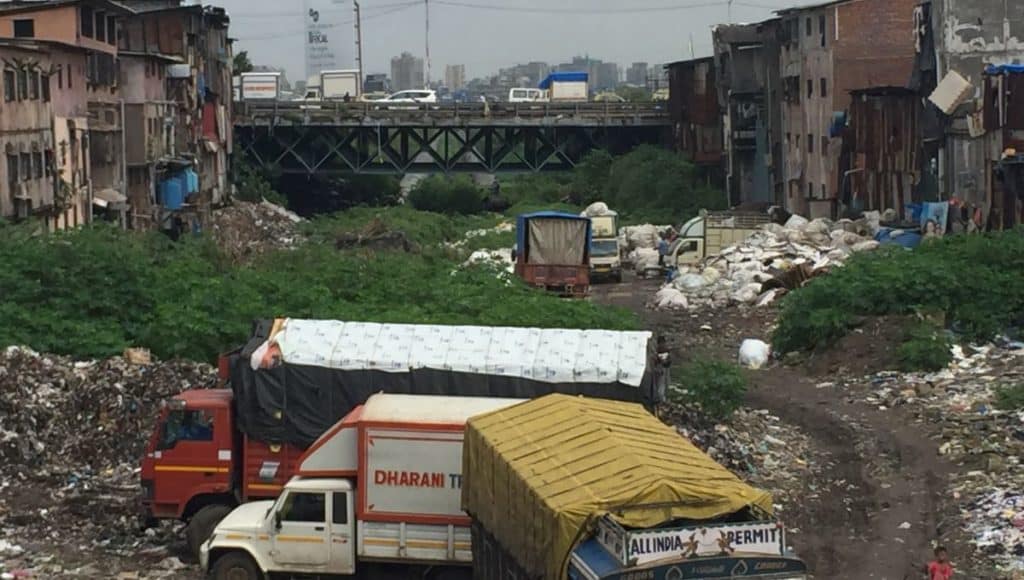Last Updated on June 7, 2023 by Ellen
My dad taught me early: never knock someone’s home. That lesson stayed with me. As a young kid dropped off at the babysitter’s tiny house, which had one bathroom for nine or ten people. It stayed with me as I lived without running water with a Guatemalan family, or through frequent power outages in the Philippines. That lesson was in my heart as I briefly met a few people of the Dharavi slum in Mumbai, India.
You may have heard of Dharavi. It’s one of the largest slums on Earth. It was a setting in the movie Slumdog Millionaire. Two scenes were shot in the slum, including at the pipes you can just make out in the picture at the top of this post.
The western part of the slum is bordered by the local train tracks.
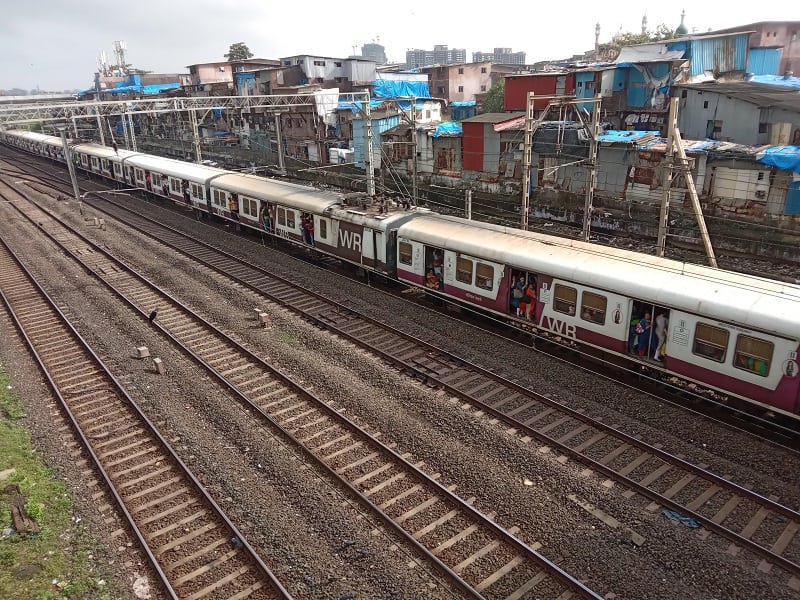
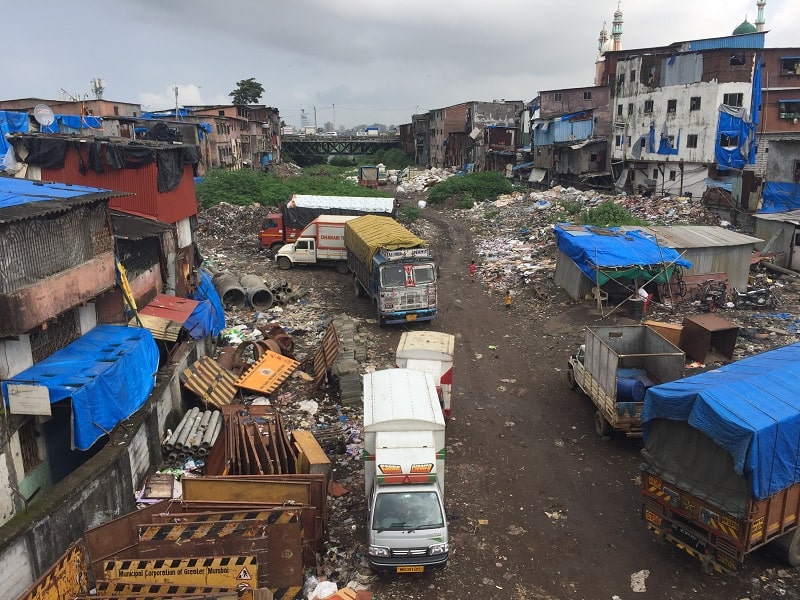
The people of Dharavi slum in Mumbai
We briefly met some people who live and work in the Dharavi slum.
One matriarch painted decorations on hand-made clay cups. She allowed us to take a picture. Her home was a room approximately 15 feet by 10 feet. The home was nicely decorated with tiles, and she even had a flat screen TV.
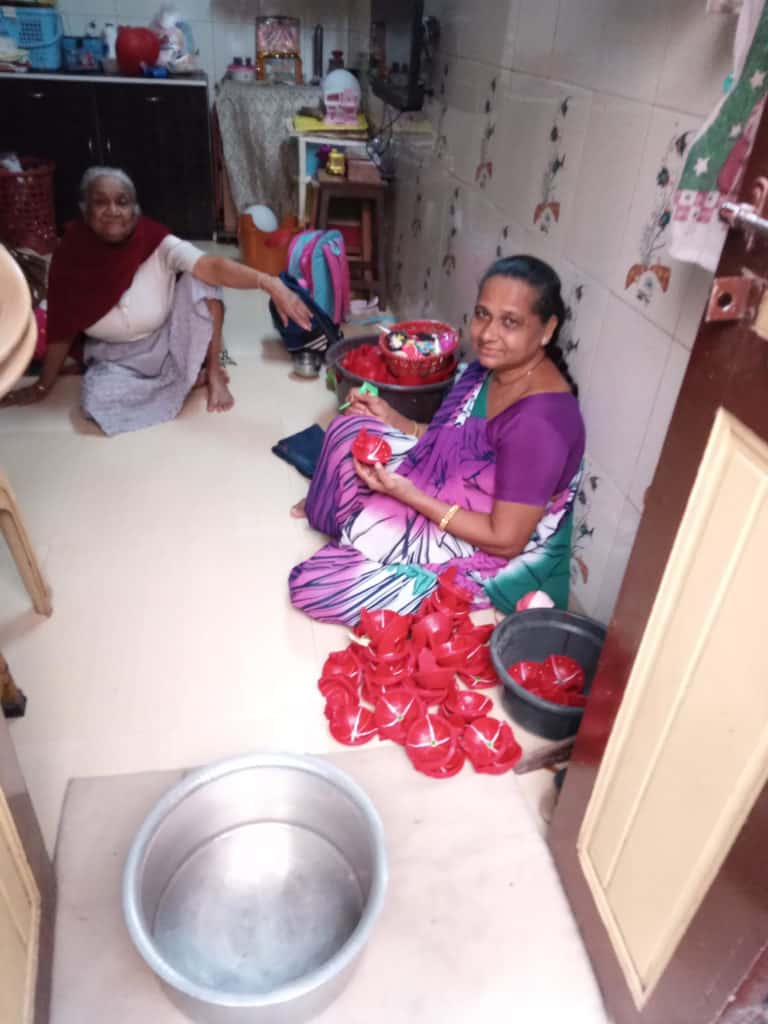
After Theo took the picture, one young woman and two girls appeared from behind the door. Turns out ten people live in that tiny room. I asked our guide what they pay for rent. The answer: the equivalent of about $60 a month. It is common for many people to live in one small space. More people means more help with rent, which means a chance to save money for more important things in life– like education. In fact, Dharavi’s residents are actually quite educated, as far as slums go. The government created schools free to all families. Whether families can afford to send their kids to school instead of into a factory for income — well, that’s another matter.
The woman pictured above has it better than most other people in the slum. This post is not about poverty porn or poverty tourism. It is written with pictures to show our family, friends, and followers what life is really like for people of Dharavi.
Meet our awesome Dharavi tour guide
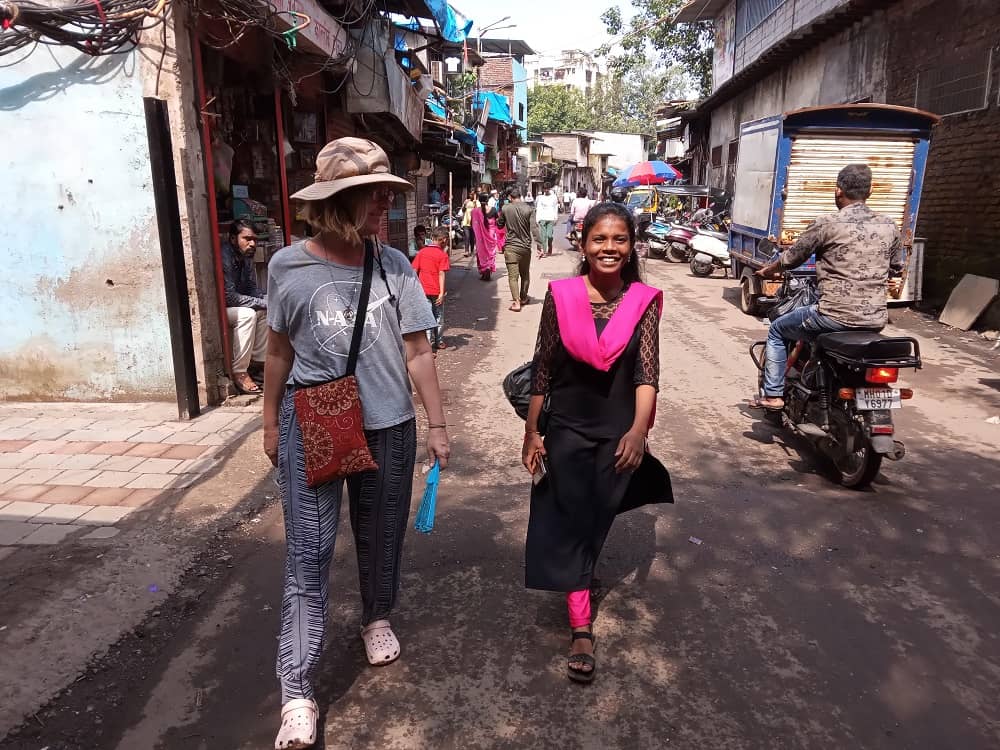
Our guide’s name was Pooja, and she grew up in Dharavi. She knows it like the back of her hand.
At 2.1 square kilometers, Dharavi isn’t that large, but it’s certainly packed. It’s official population count is 1 million. The unofficial count: 2 million. Mind blowing! It is one of the largest slums in the world, and undoubtedly the largest slum in Asia.
So who lives in Dharavi? Who are these 1 (or 2) million people? Some of them have lived there for many years. Some people are relatively new – they come from India’s countryside hoping for a better life – an easier life filled with material comforts.
All of them are people like us: not greater than, not less than. They are just like us… though we have different starting points through the birth lottery on Earth. Hindus might call it karmic debt.
We loved that our guide Pooja has a personal connection to the slum. She is a smart and compassionate young woman who now goes to college for an advanced degree in sociology.
The people of Dharavi in 2022
The people of Dharavi use their ingenuity to make life work – even through the pandemic. Dharavi is a city within Mumbai, and the people there are survivors.
The organization inside the slum is impressive. It is a community.
There is an industrial side and a residential side.
Industrial life for people of Dharavi
The industrial side features the world-renowned recycling business. Plastic junk from all over India lands here. Everything from car parts to computer frames. Men sort the junk by color and quality, use machines to crush it into bits, put the bits into bins with chemicals for washing, and then pack it and sell it to companies that can reuse the plastic for non-food grade use.
Some of the process is shown in the pictures below.
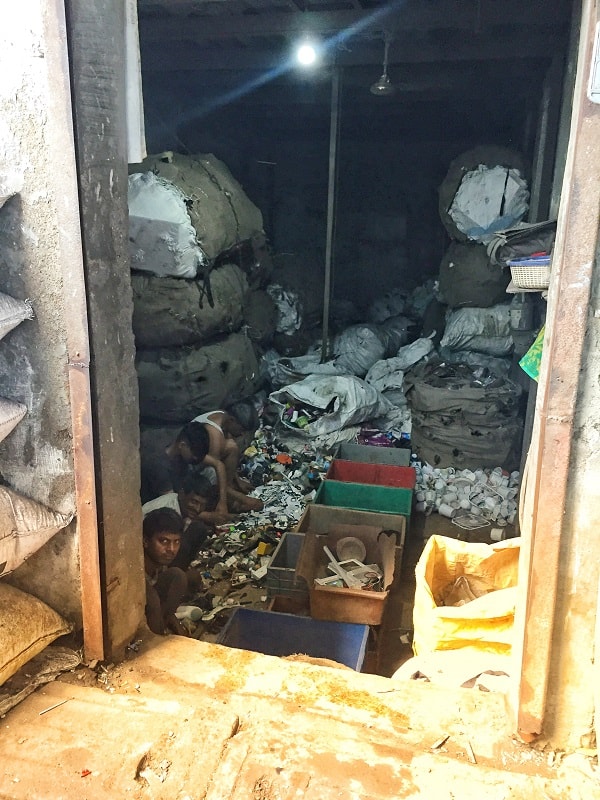
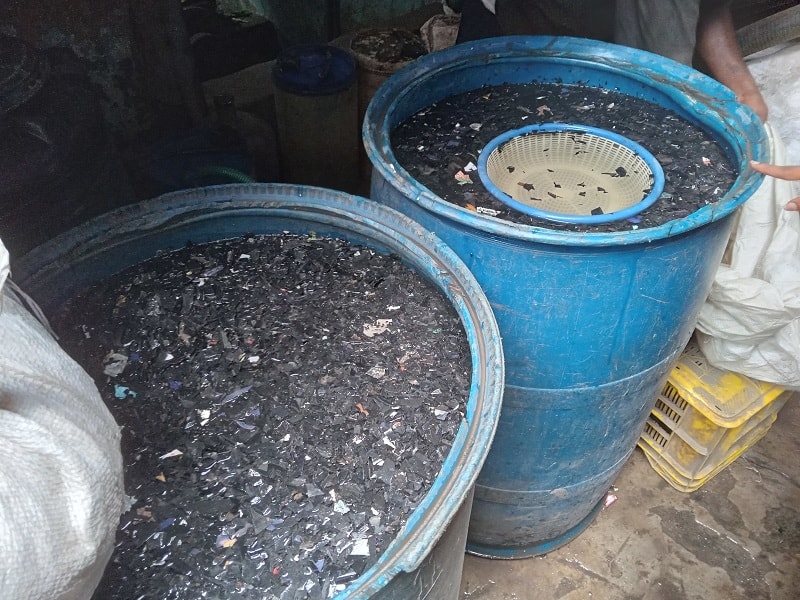
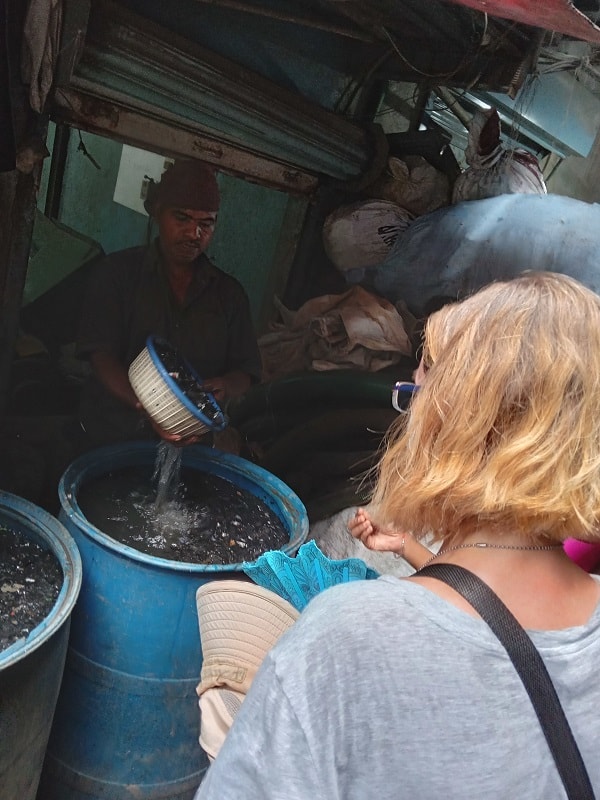
In addition to recycling, men also make soap and sell it to wholesalers.
You’ll see in a picture below Theo and Pooja standing in front of giant raw globs of vegetarian soap that will be cut and packaged and then sold. In the other shot, a worker watches us as Pooja explains the soap making process.
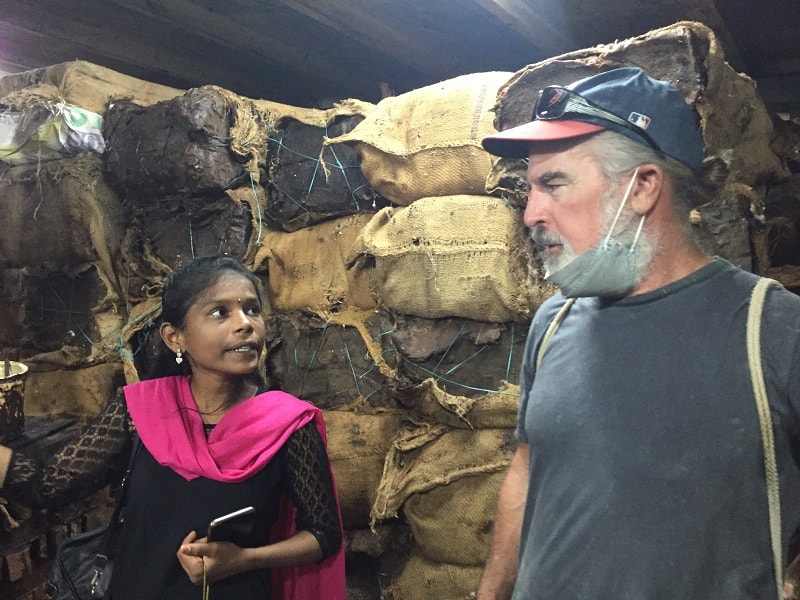
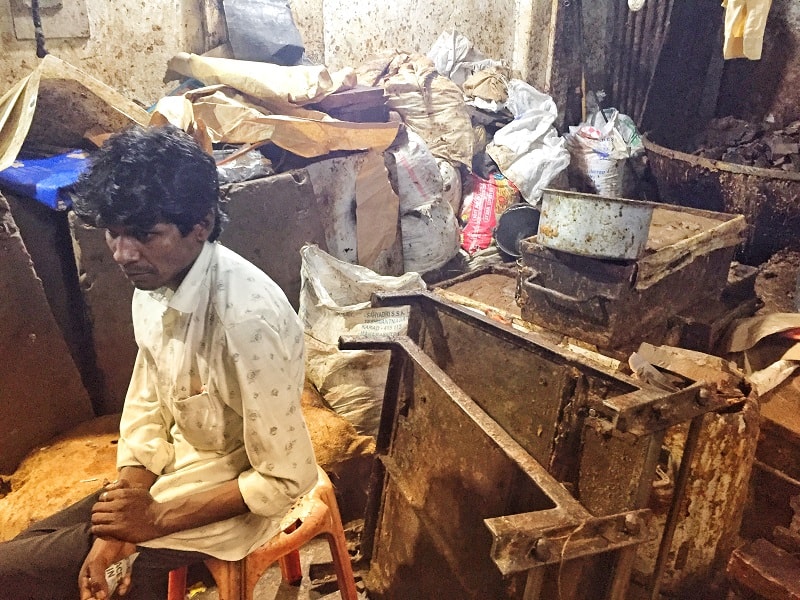
Some men take recycled parts and fashion frames for suitcases. Other men sew everything from canvas bags to suitcases, dresses to scarves.
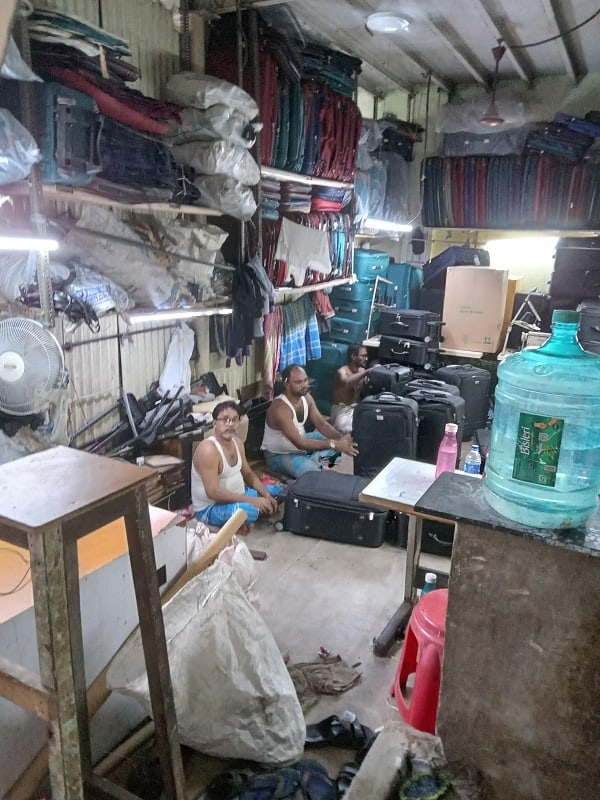
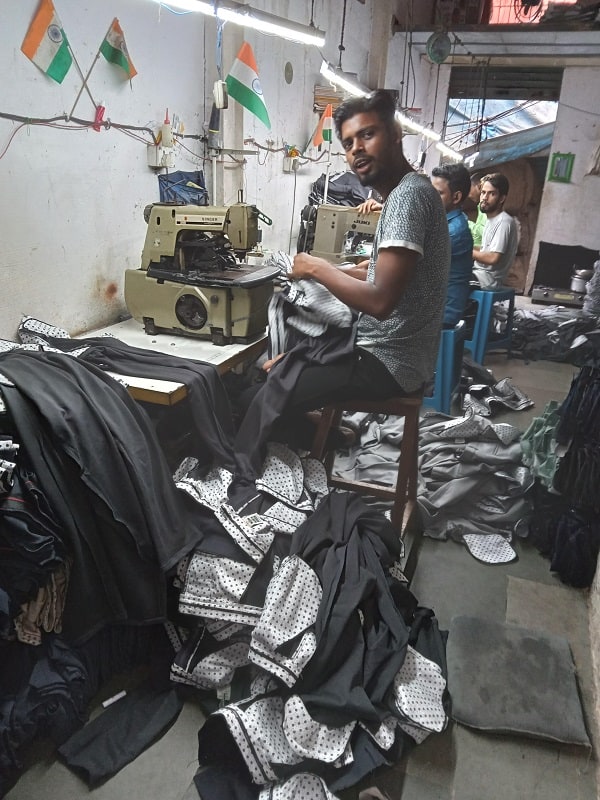
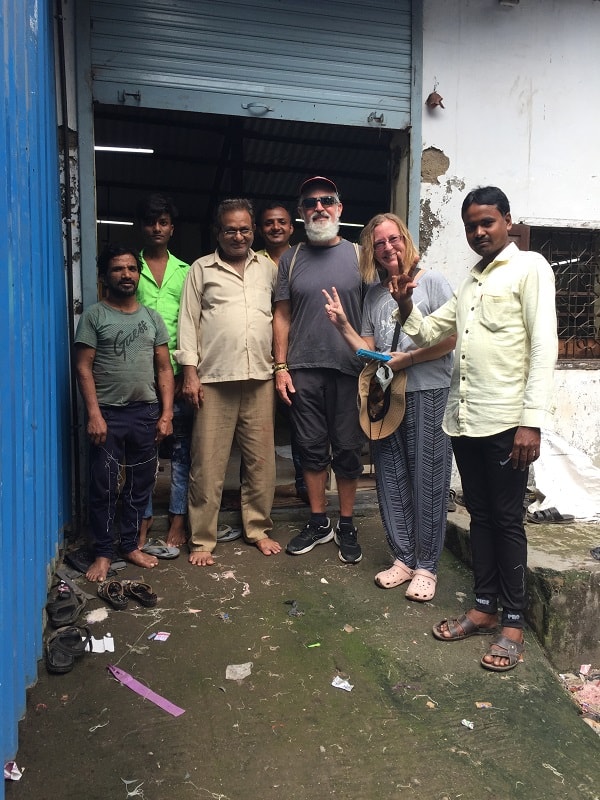
Women don’t go to the industrial areas. Pooja says it’s because the chemicals around the plastics are dangerous to breathe in for women of childbearing age. My own opinion: women would be too much of a distraction to the work. The men we saw are all hard working.
The men work 12-hour shifts. Breaks are short. To save time, there are small takeout restaurants and barbers every third block or so. Some men sleep at the work place because they have no home – they can’t afford $60 a month for rent.
The alleys in the industrial section are mostly narrow, with piles of plastic to be sorted. Men constantly go up and down the alleys with bags on their shoulders or heads. You might see a dead rat. Just walk over it.
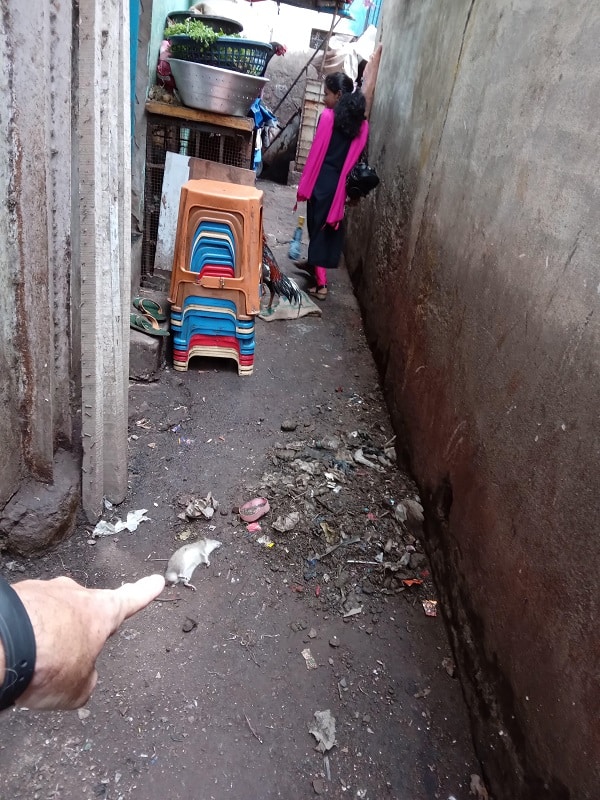
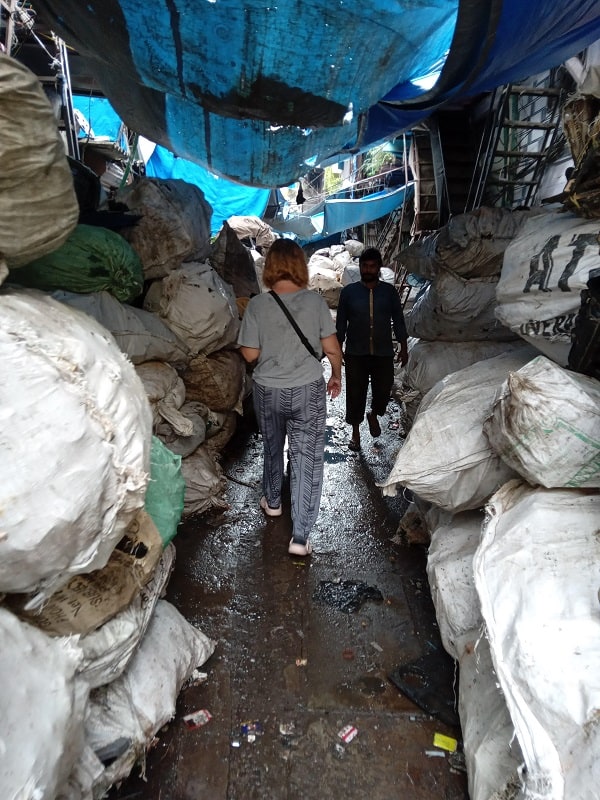
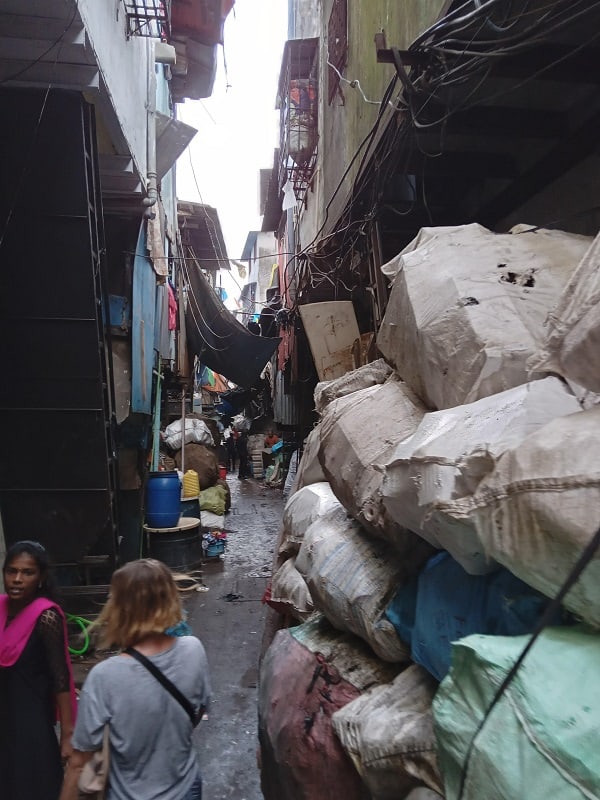
Residential life for people of Dharavi
In the residential section of Dharavi, it is noticeably cleaner. Here, we had to ask Pooja for permission to take photos. We were only told no one time.
Women earn money by packaging up snack foods, sewing clothing, stitching leather and canvas bags.
Clay pots and cups are made in the residential section, as well. The ovens emit sharp smoke right outside homes. I guess the smoke from baking clay is not as hazardous as emissions from chemical solutions washing filthy plastic. Neither situation is ideal, but here we are.
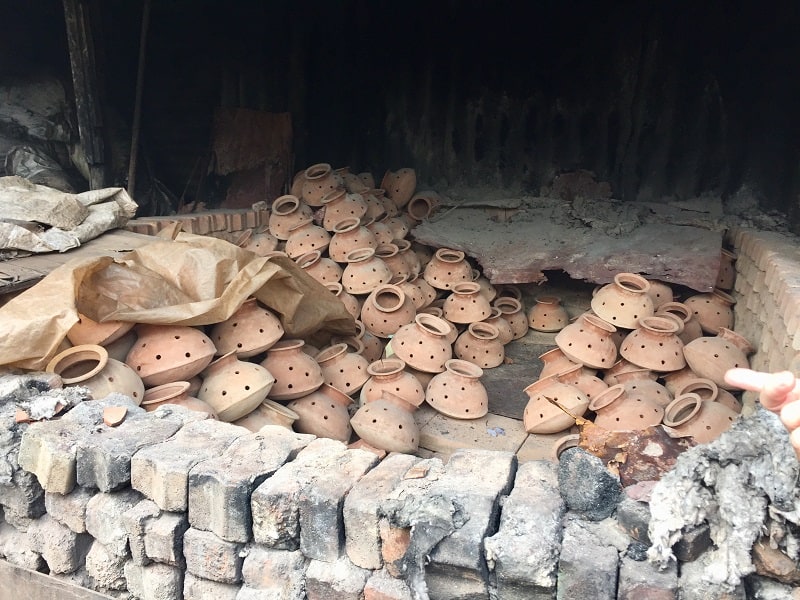
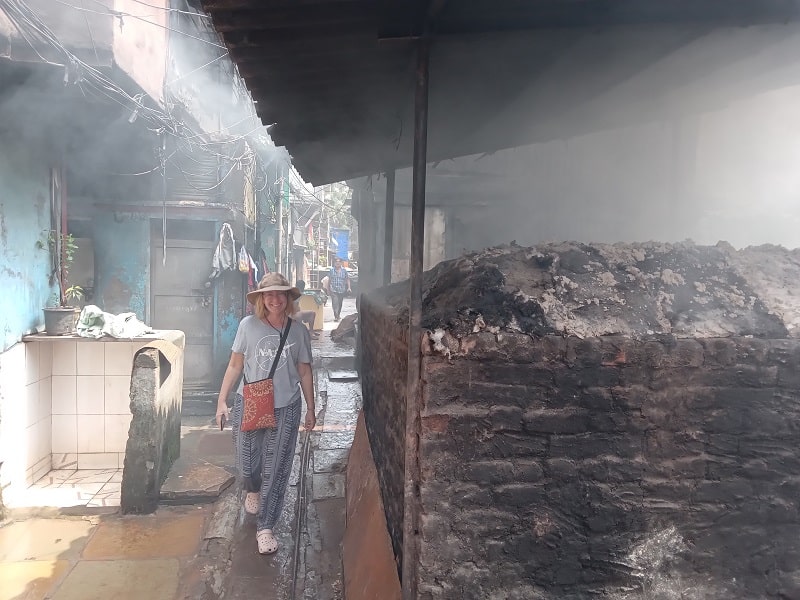
Many religions are found in the slum: Hindu, Muslim, Christian, and more — plus many sects of the main religions.
Pooja says no one ever fights over religion. If they do fight about anything, it’s over water. Water service is turned on in areas of Dharavi for about two hours in the morning. Better fill up your containers at that time, or you’ll have to wait for another day.
The alleys we walked through in this section were mostly tidy. On the larger roads in the residential section we saw schools (private, semi-private/public, and public), clinics, wet and dry markets. It was like anyplace else in town; it happened to be within the 2.1 kilometer area known as Dharavi.
Interesting facts about Dharavi today
Interestingly, there is nothing that cannot be done without electricity in the slum, and power outages do happen. All of the recycling, sewing, soap making and more – all of it – can be done by hand, just slowly. Even the large crushing machine for plastics has a hand lever.
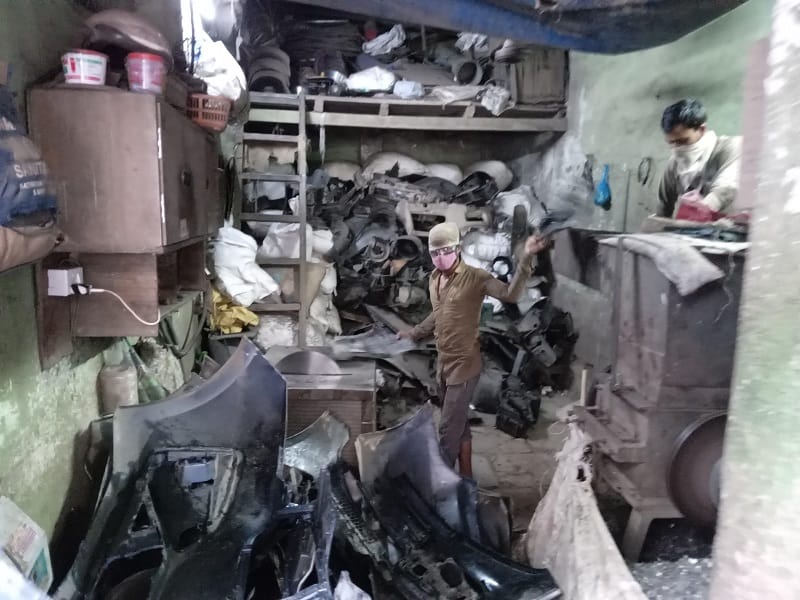
As organized as it is, the people of Dharavi still live in a slum. And all slums have health problems.
The one-room homes don’t have toilets. There are public toilets for residents to use (one toilet per 2,000 people by some estimates), which are reportedly not in the best condition. Countless people of Dharavi use a creek on the perimeter of the slum for defecation.
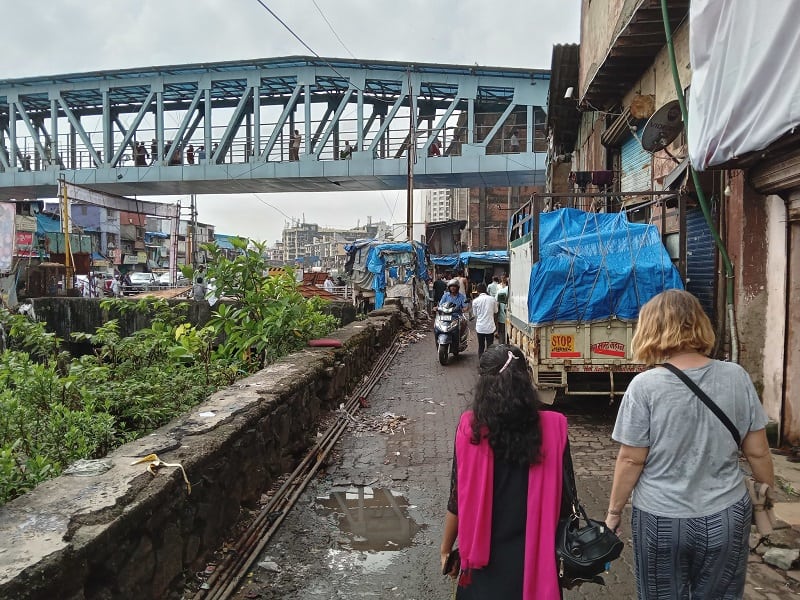
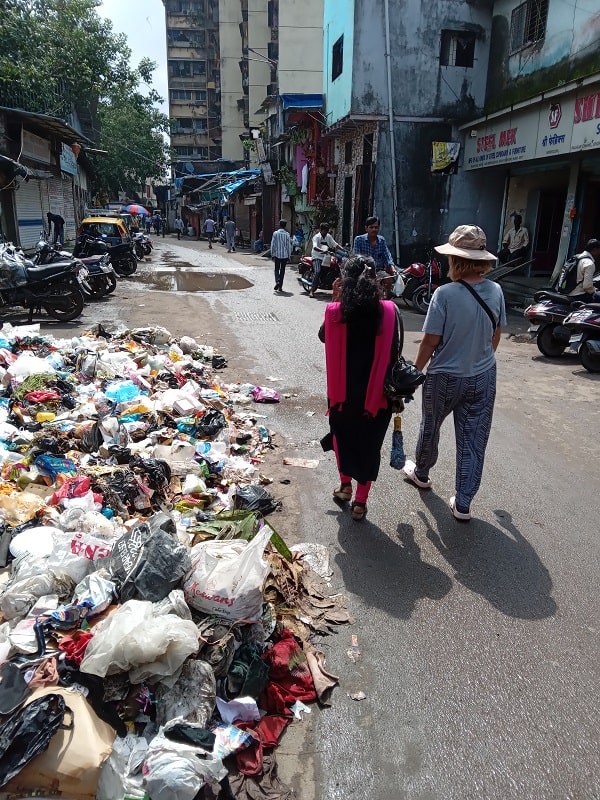
The pandemic did a number on Dharavi. At the height of the COVID crisis, many people were sick and died. Today everyone is vaccinated and no one wears a mask.
Everyone kept working at the height of the pandemic. Recycling, soap making, leather goods stitched together, and more. All of the goods made in the slum are sold to wholesalers, then retailers, and then to us.
Goats, dogs, chickens, cats and rats all live in the slum, too.
Could you live there?
Could I live in such an environment? Yes, but I don’t want to. Any of us could. Most of us probably would rather not.
I would have lunch or dinner with anyone we came across during our slum tour. I’d spend an afternoon with them swapping tales and it would be fun to play games with the kids.
I’d do that and more because as my dad used to say: despite their homes and backgrounds, they’re still people.
The photos above
We understand why some tours ban photos . No one wants to see the people of Dharavi exploited. As I hope I’ve shown, we use pictures to help tell the story. Taking photos are one of the main reasons we went with this tour: we were allowed to freely take pictures in the industrial area and permitted to photograph people with permission in the residential sections.
However, we asked permission of everyone we photographed, and some people even asked us to take pictures with them.
The people of Dharavi are proud of their hard work. They want you to know: they’re people, too.
At the end of the tour, we stopped in a shop that sells some of the leather items and other goods made in the slum. (No cowhide here because of the large Hindu majority.) What’s crazy to me: the same leather bag without a designer label costs a fraction of what Americans pay.
I think of all the money I wasted as a teen and young adult on name brand items and I cringe. Thankfully, I wisened up about the time I met Theo and started to save money.
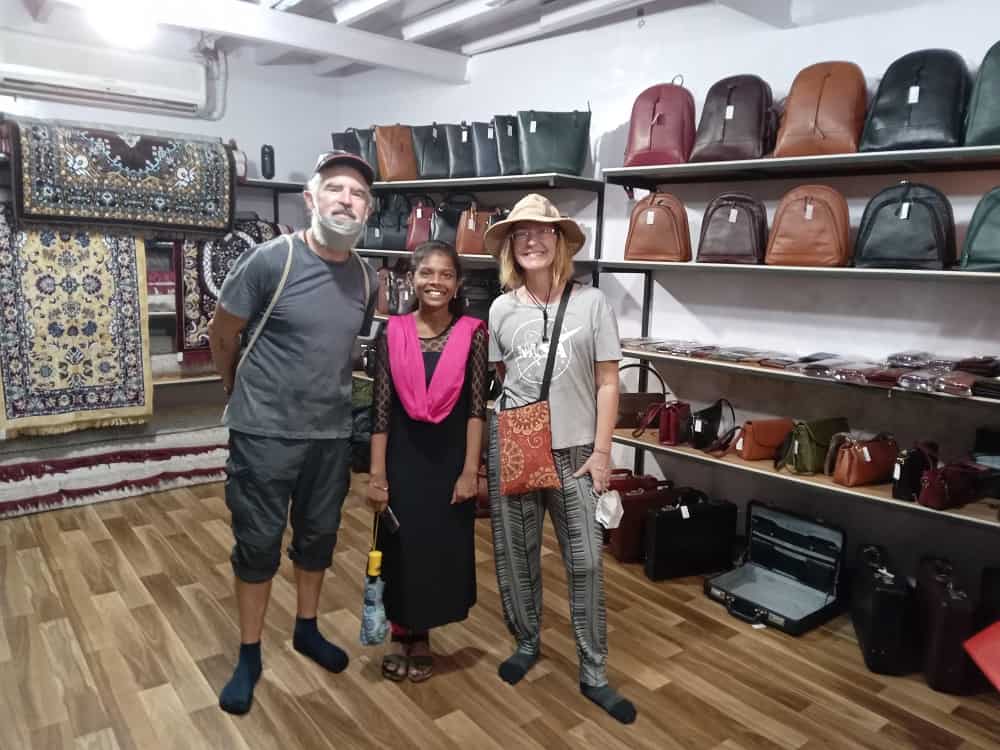
Reminder: this is an independent travel blog. We get nothing in return for reviews.
Tour information
We saw this particular tour on Trip Advisor, Google Maps, Airbnb Experiences, and various websites. For the best deal, simply contact them directly at Magical Mumbai Tours. We understand why they have great reviews!
Before the pandemic Pooja and other guides at Magical Mumbai Tours led 10 slum walks a day on average. In the last month, there have only been eight tours. India is open to international travelers again, and we hope more tourists like us head to Dharavi.
Thank you, Pooja! We will always remember that time we visited Asia’s largest slum with an intelligent and kind tour guide. Godspeed.
Parasparopagraho jivanam.

